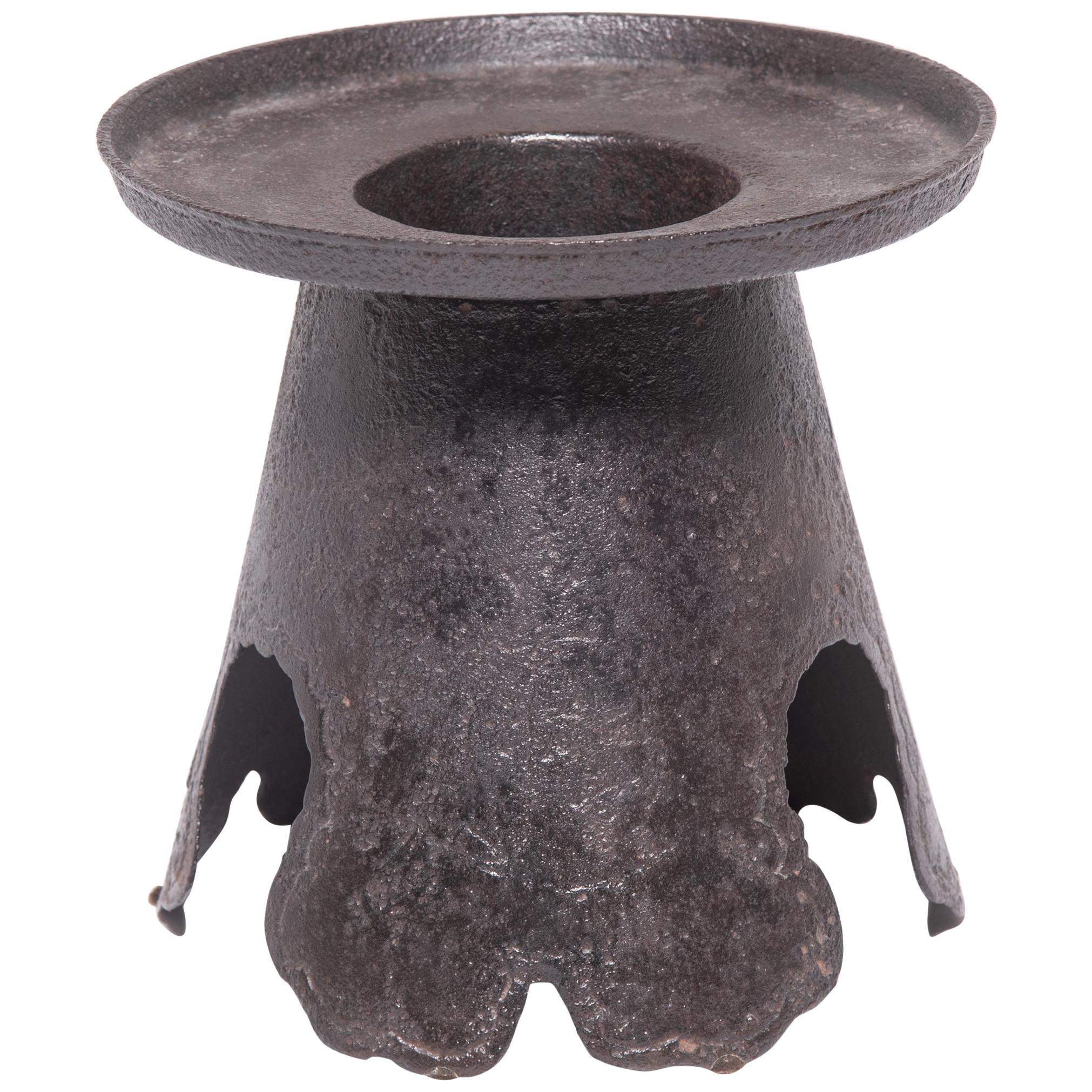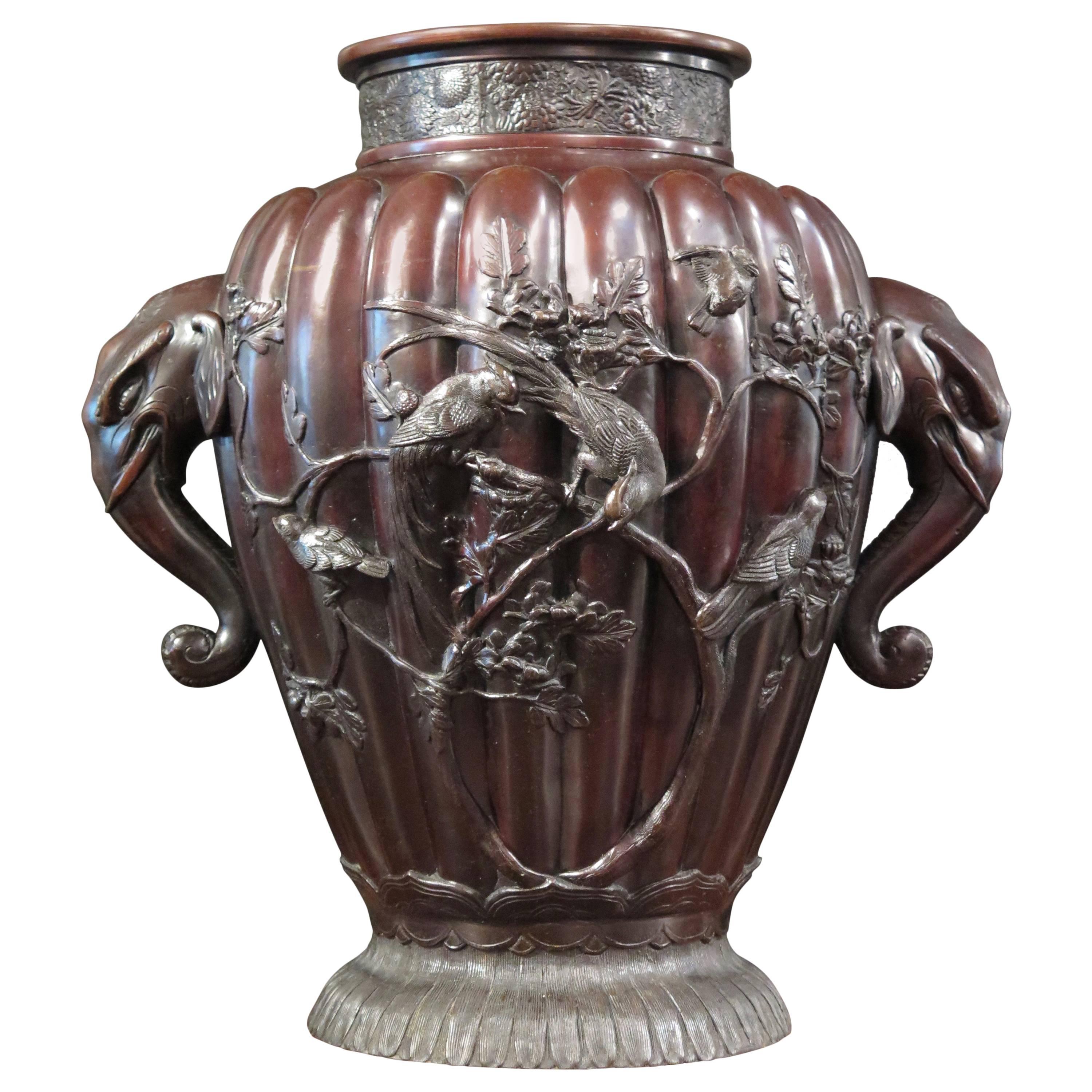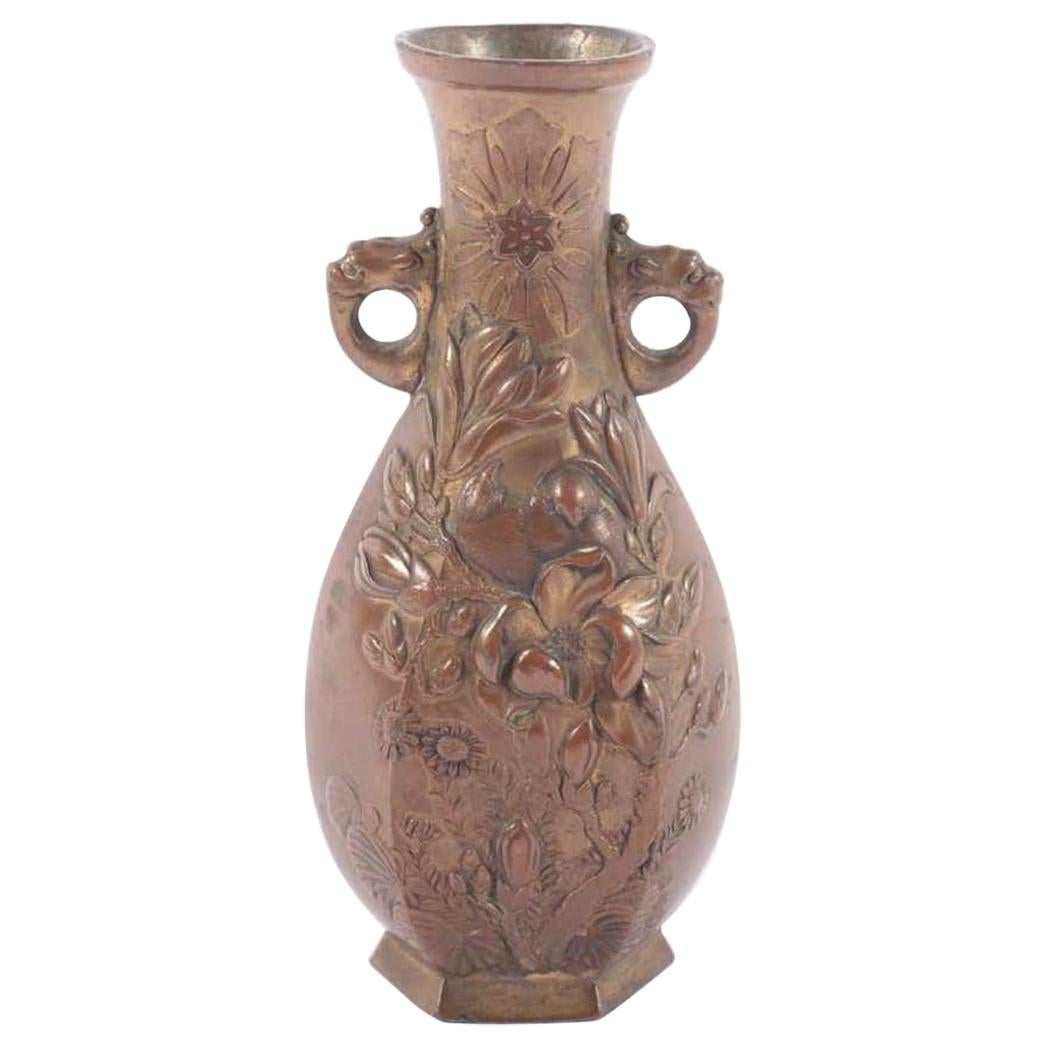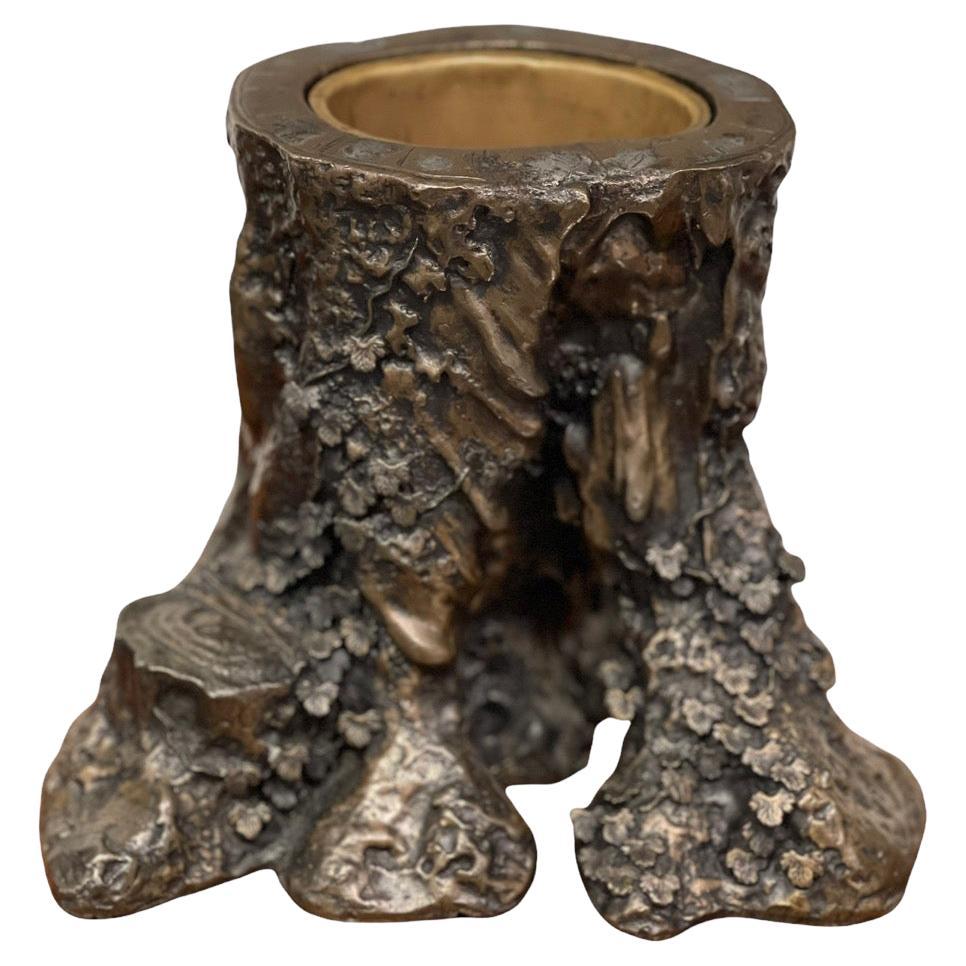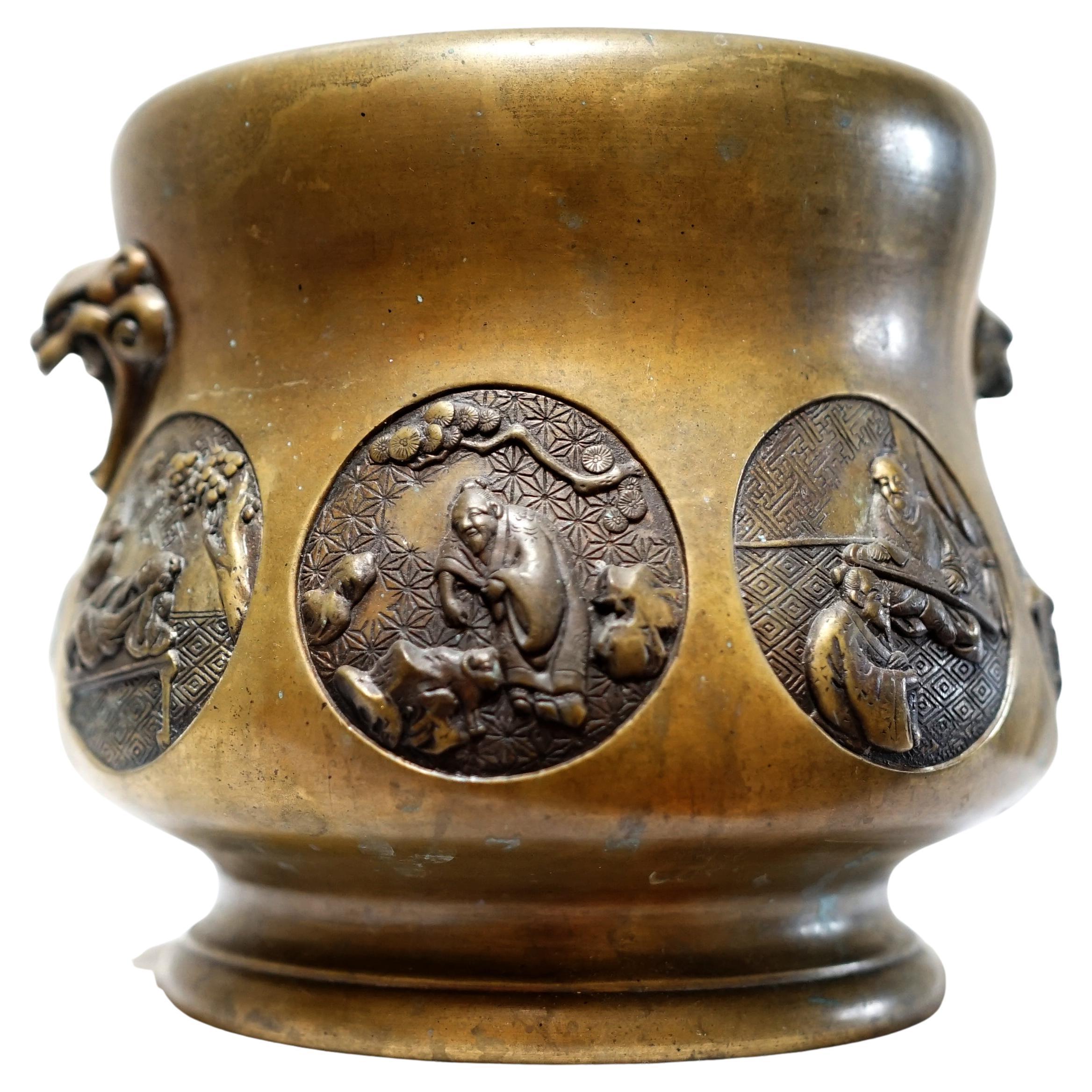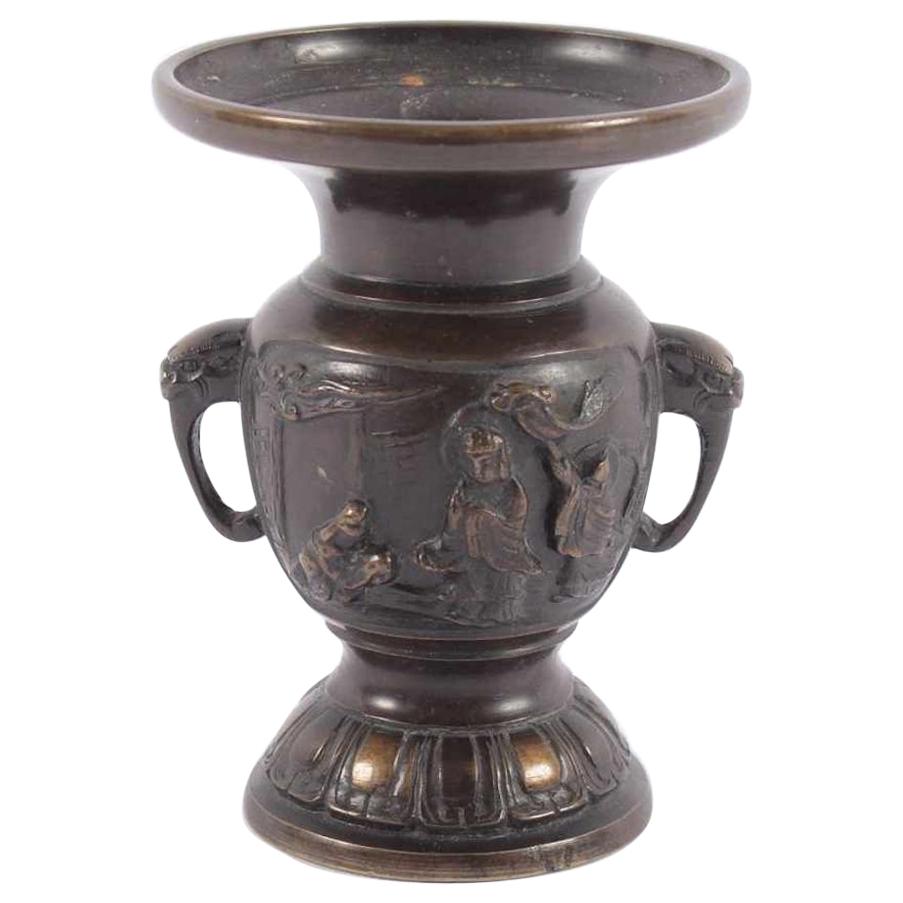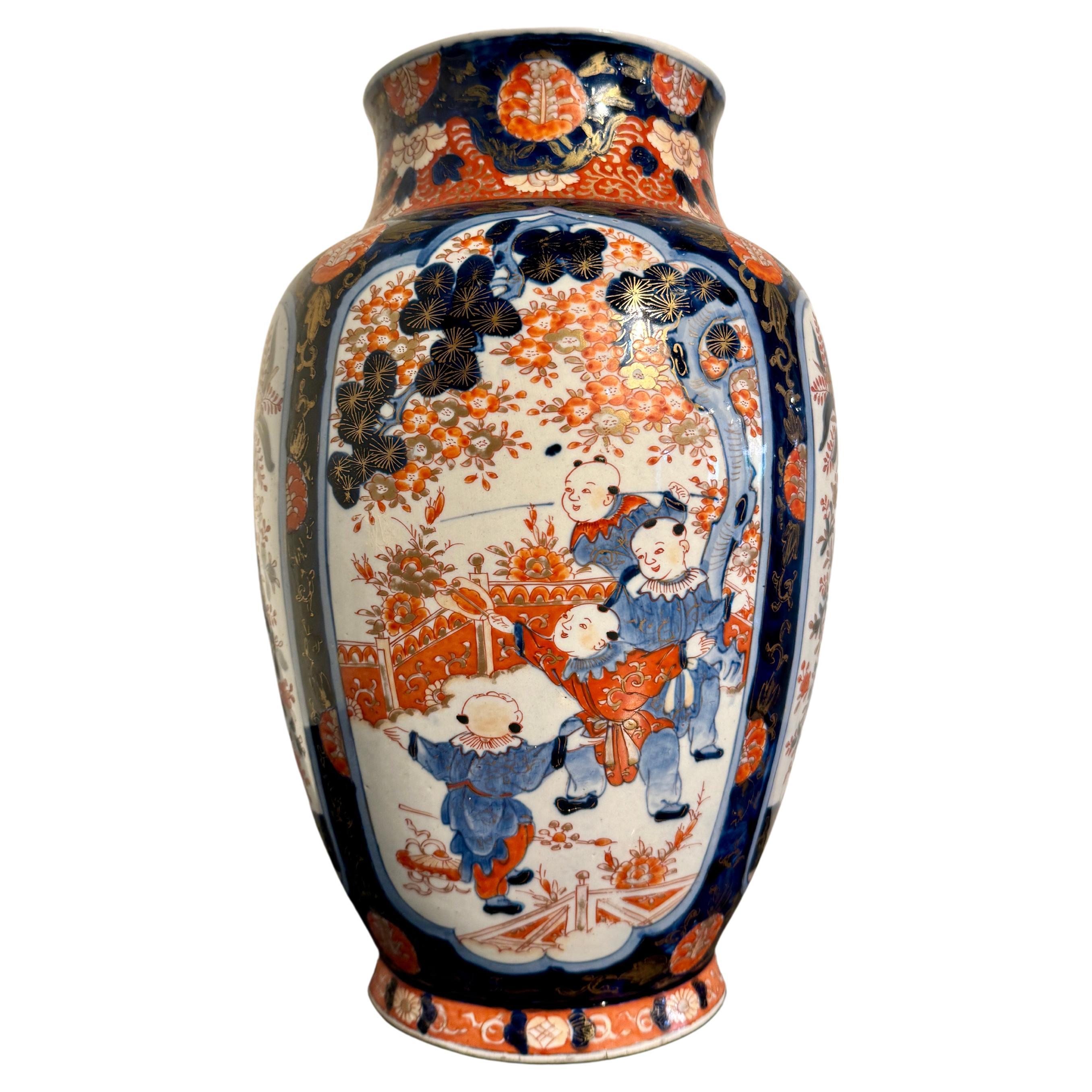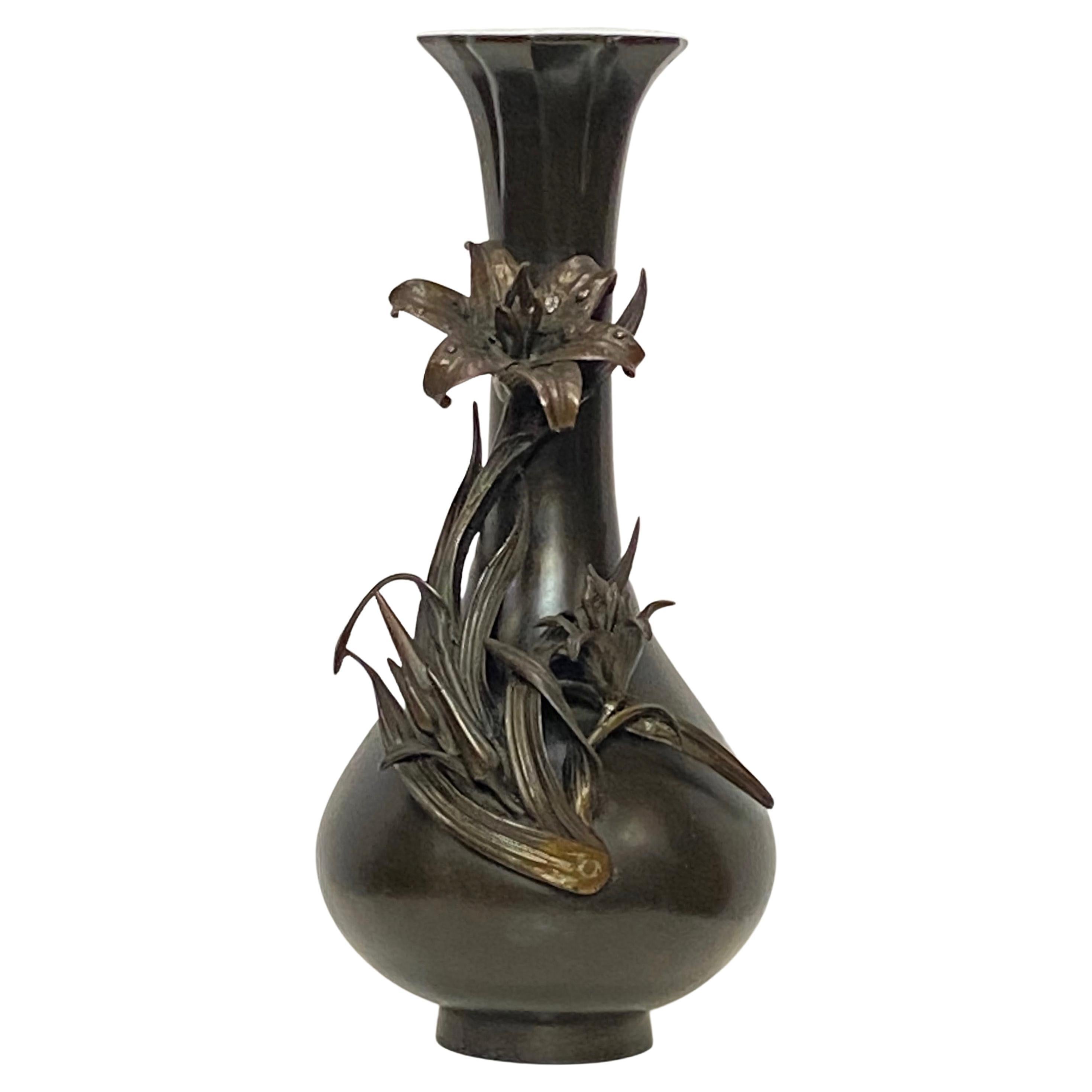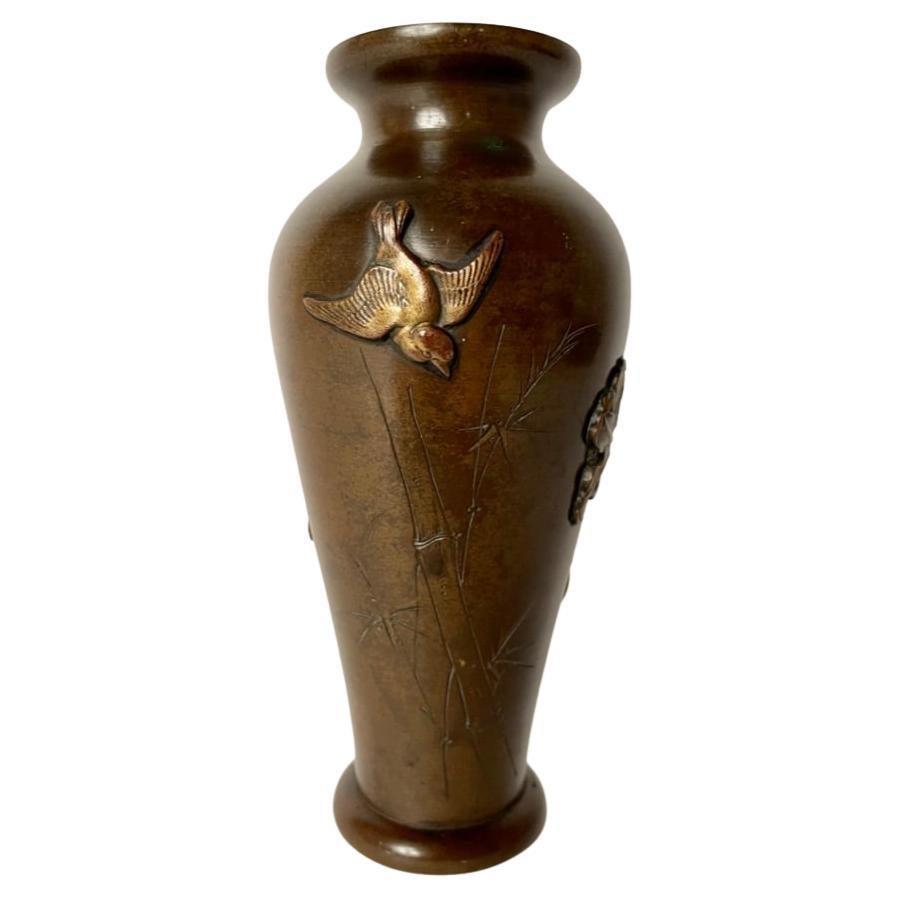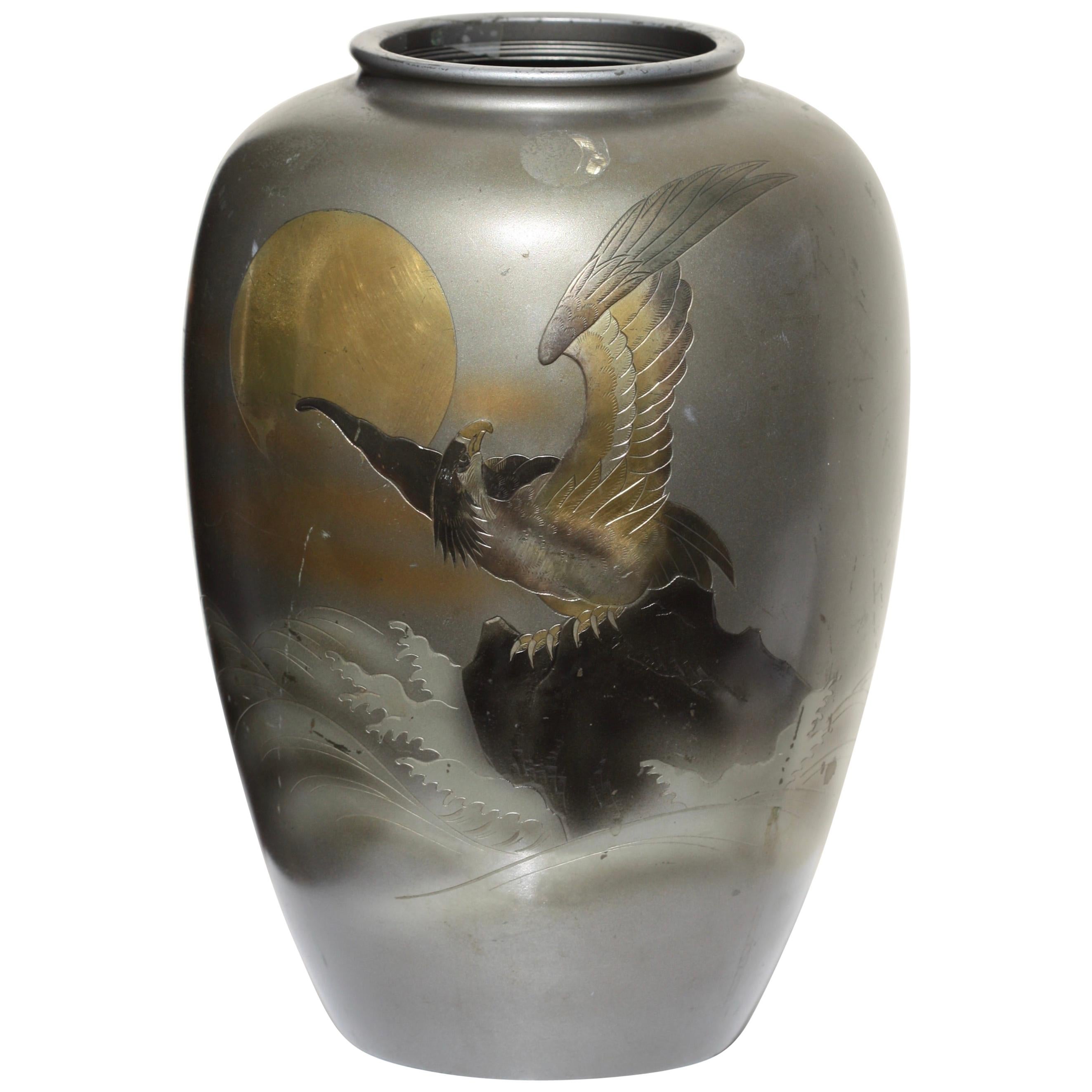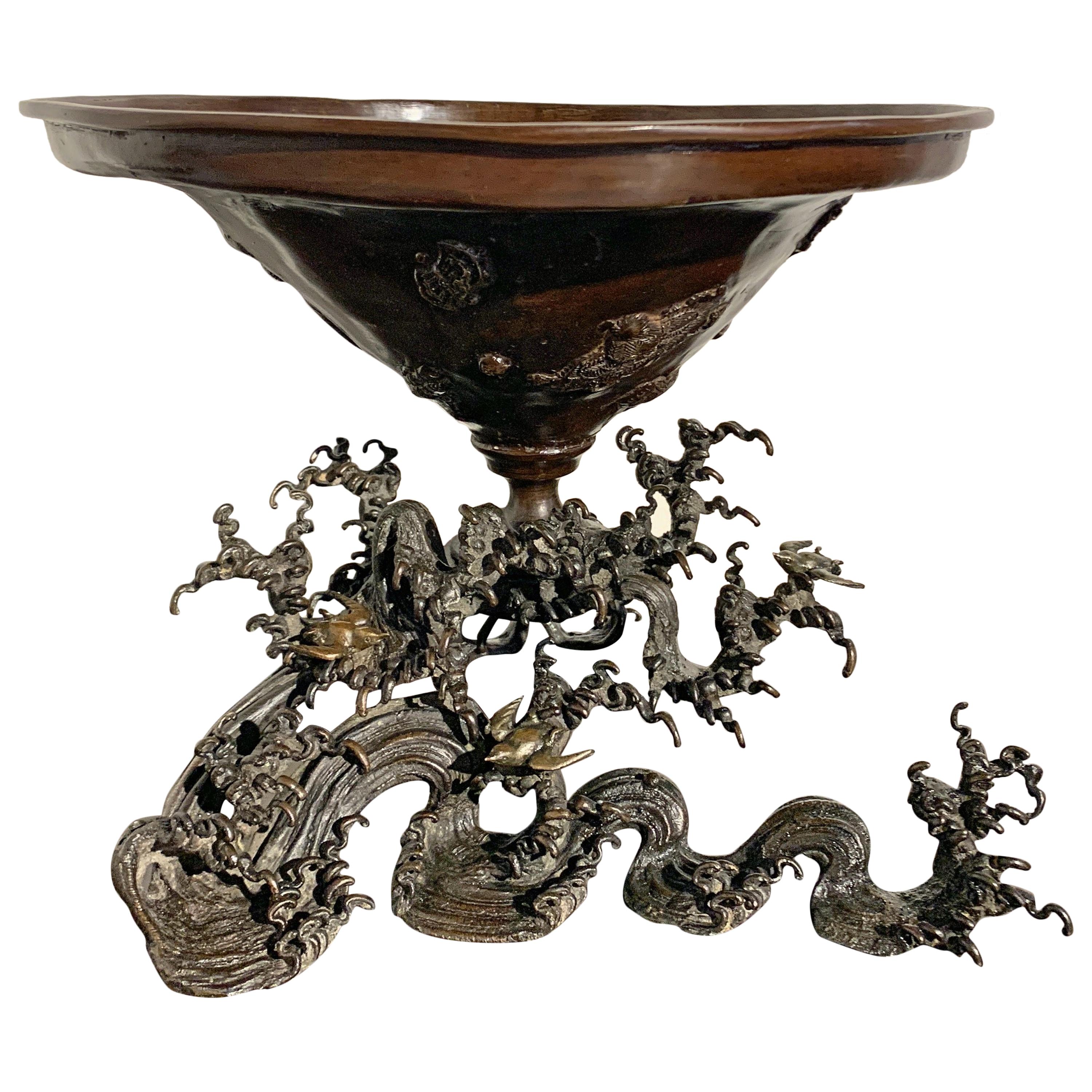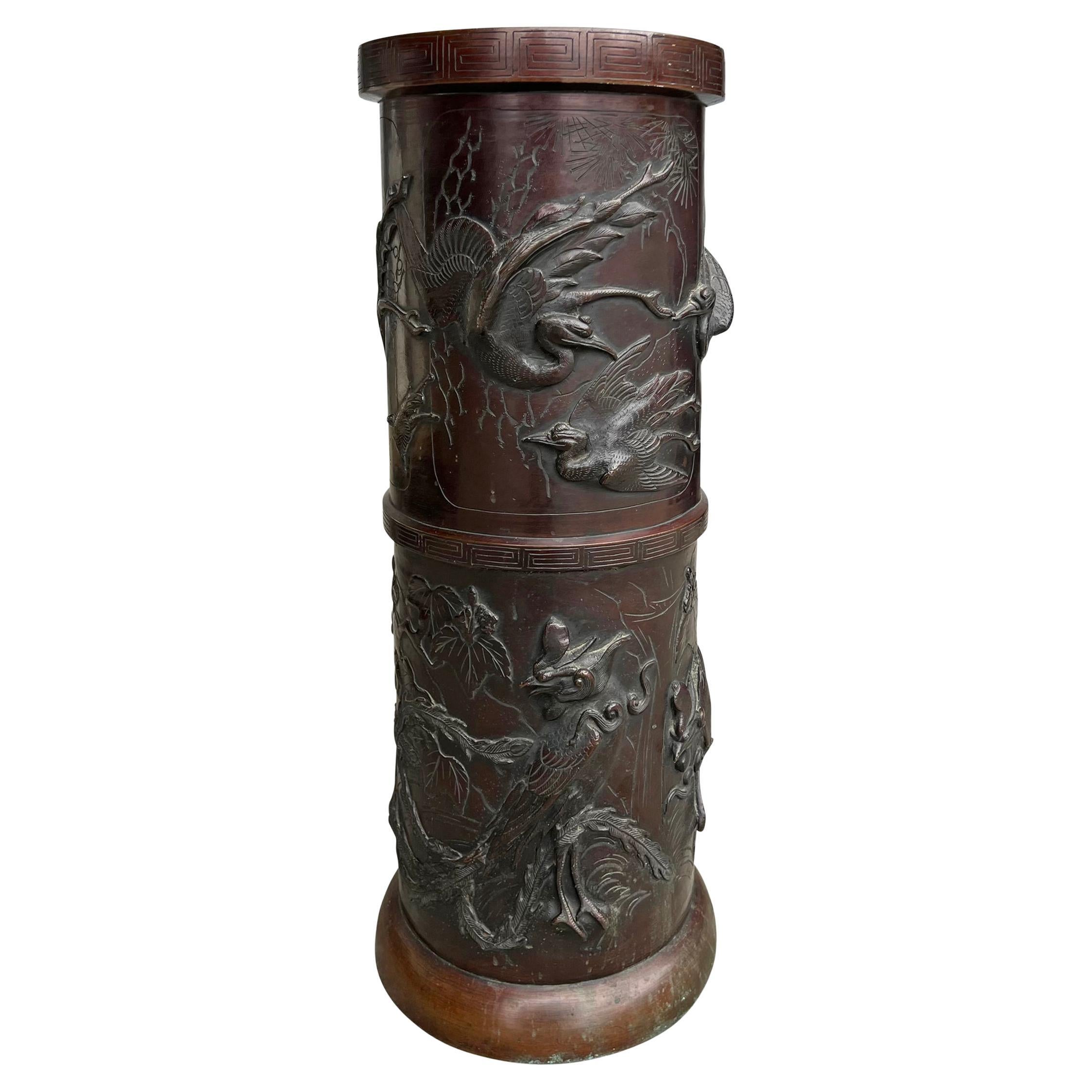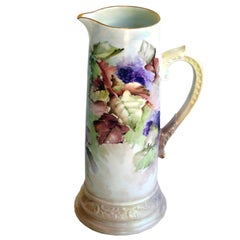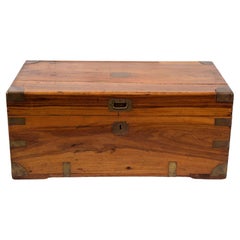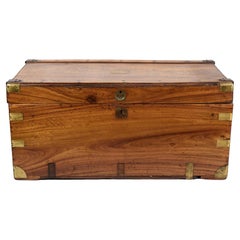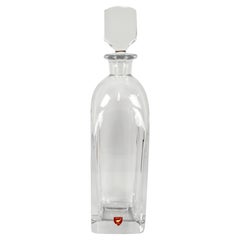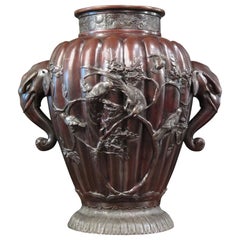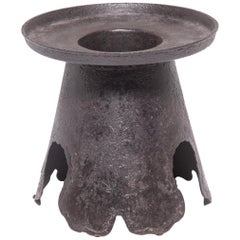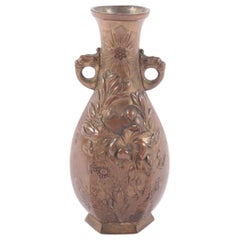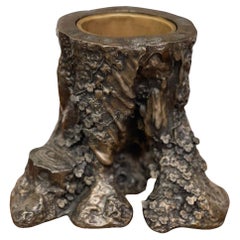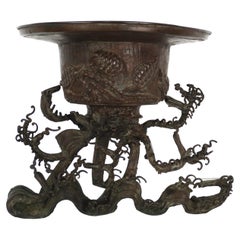
Late 19th Century Japanese Meiji Bronze Usubata with Turtles for Ikebana
View Similar Items
Want more images or videos?
Request additional images or videos from the seller
1 of 9
Late 19th Century Japanese Meiji Bronze Usubata with Turtles for Ikebana
Price:$1,000
$2,695List Price
About the Item
- Dimensions:Height: 7 in (17.78 cm)Width: 8 in (20.32 cm)Depth: 7.5 in (19.05 cm)
- Style:Meiji (Of the Period)
- Materials and Techniques:Bronze,Forged
- Place of Origin:
- Period:
- Date of Manufacture:circa 1890
- Condition:Wear consistent with age and use. Minor structural damages. Stem of vessel does not rest perfectly within base. Wear consistent with age and use. Losses to the tips of some of the wave sprays. The wave stand has with some areas of verdigris and encrustation. Please see photos for details.
- Seller Location:Soquel, CA
- Reference Number:Seller: D73721stDibs: LU1215226570522
About the Seller
5.0
Vetted Professional Seller
Every seller passes strict standards for authenticity and reliability
Established in 1986
1stDibs seller since 2015
178 sales on 1stDibs
Authenticity Guarantee
In the unlikely event there’s an issue with an item’s authenticity, contact us within 1 year for a full refund. DetailsMoney-Back Guarantee
If your item is not as described, is damaged in transit, or does not arrive, contact us within 7 days for a full refund. Details24-Hour Cancellation
You have a 24-hour grace period in which to reconsider your purchase, with no questions asked.Vetted Professional Sellers
Our world-class sellers must adhere to strict standards for service and quality, maintaining the integrity of our listings.Price-Match Guarantee
If you find that a seller listed the same item for a lower price elsewhere, we’ll match it.Trusted Global Delivery
Our best-in-class carrier network provides specialized shipping options worldwide, including custom delivery.More From This Seller
View All19th Century Limoges French Painted Porcelain Pitcher
By Delinieres & Co. 1
Located in Soquel, CA
19th Century Limoges French Painted Porcelain Pitcher
Rare and prized, American Amateur painting on French Limoges pitcher, circa 1897. Dimensions, 1...
Category
Antique 19th Century French Aesthetic Movement Vases
Materials
Porcelain, Paint
Camphorwood Campaign Chest - Late 19th Century Chinese Export Case (Medium)
Located in Soquel, CA
Camphorwood Campaign Chest - Late 19th Century Chinese Export Case (Medium)
This hardwood chest has brass hardware, including handles. It has a plaque on the top that would have bee...
Category
Antique Late 19th Century Chinese Chinese Export Blanket Chests
Materials
Brass
Camphorwood Campaign Chest - Late 19th Century Chinese Export R.B. Van Cleve, NY
Located in Soquel, CA
Camphorwood Campaign Chest - Late 19th Century Chinese Export Case (Medium)
This hardwood chest has brass hardware, including handles. It has a brass plaque on the top that has been inscribed with the owner's name, R. B. Van Cleave...
Category
Antique Late 19th Century Chinese Chinese Export Blanket Chests
Materials
Brass
Vintage Mid-Century Orrefors Crystal Decanter with Stopper
By Orrefors
Located in Soquel, CA
Elegant Mid-Century Modern vintage crystal decanter with stopper by Orrefors (Swedish, founded 1898), c. 1960's. Engraved signature to base Orrefors HM 2498 - this particular style was by Edvard Hall.
Includes original red Orrefors Sweden sticker with logo.
"Orrefors HM 2498" etched into base.
Measures 11.5" H x 3" W x 3" D.
Orrefors Glassworks was founded in 1898 on the same site where ironworks operations had been run since 1726. In the same year that the glassworks was founded, a hot shop was built for making technical, medical and household glass and stemware to make use of waste wood and labour. Glass now replaced the less profitable ironworks operations.
In 1913, Consul Johan Ekman from Gothenburg became the new owner of Orrefors Glassworks. He appointed Albert Ahlin as manager of the glassworks and this marked the start of a new era. In 1914, Orrefors started manufacturing crystal products, and as well as cut crystal according to purchased patterns and samples, Orrefors made art glass using the overlay technique with etched decoration. The new management quickly saw that artists were needed in the business, so Simon Gate was employed in 1916 and was joined by Edward Hald a year later.
That same year, Gate and Hald made their first tentative attempts at figure engraving. They also experimented with the new innovative graal (grail) glass technique that was developed at Orrefors by the master glassblower Knut Bergqvist. The major successes were achieved a few years later at the Gothenburg Exhibition in 1923, and in particular at the Paris Exhibition in 1925. The thin engraved glass was admired by the surrounding world, and both Orrefors and the artists themselves were awarded the Grand Prix.
The successes of Simon Gate and Edward Hald in Paris in 1925 constituted the start of the long Orrefors tradition of creative design closely combined with genuine and innovative craftsmanship.
Since then, new designers and skilled glassmakers have continued in the spirit of Gate and Hald. Vicke Lindstrand and Edvin Öhrström with the new glass technique called Ariel in the 1930s. Sven Palmqvist with Kraka and Ravenna in the 1940s. And in the 1950s with Fuga, which, along with Nils Landberg’s slender tulip-shaped glass “Tulpan” and Ingeborg Lundin’s apple-shaped vase “Äpplet”, are now seen as symbols of the renaissance of Swedish design. The 1960s are associated with Gunnar Cyrén’s Pop glass, and in the 1970s, Eva Englund, Olle Alberius, Lars Hellsten and Jan Johansson as well as Cyrén worked at the glassworks.
Since the 1980s, designers such as Anne Nilsson, Erika Lagerbielke, Helen Krantz, Matz Borgström, Per B Sundberg, Martti Rytkönen, Lena Bergström, Ingegerd Råman, Malin Lindahl and Efva Attling...
Category
Mid-20th Century Swedish Mid-Century Modern Bottles
Materials
Crystal
Mid-Century Sommerso Cobalt Blue with Black Spiral Vase
By Soichiro Sasakura
Located in Soquel, CA
Stunning, rare heavy handblown vase with cobalt blue and black spiral in clear glass by Soichiro Sasakura of Sasaki glass. Very contemporary aesthetic that would be perfect in reside...
Category
Mid-20th Century Japanese Japonisme Vases
Materials
Art Glass, Blown Glass, Sommerso
19th Century Georgian, Sheffield Silver Plate Candlesticks, Pair
By Sheffield
Located in Soquel, CA
19th Century Georgian, Sheffield Silver Plate Candlesticks, Pair
Pair of English, Georgian, George IV Sheffield silver plate candlesticks. Vintage, distressed silver finish. Silver ...
Category
Antique 1820s English George IV Sheffield and Silverplate
Materials
Sheffield Plate, Copper
You May Also Like
Massive Japanese Meiji Period Bronze Vase, Late 19th Century, Japan
Located in Austin, TX
A very large Meiji period bronze vase, possibly for temple use, with high relief design and elephant head handles, late 19th century, Japan.
Of baluster form and unusual size, yet ...
Category
Antique Late 19th Century Japanese Meiji Vases
Materials
Bronze
Japanese Usubata Ikebana Vessel, c. 1900
Located in Chicago, IL
This early 20th century iron vessel is a Meiji-era vase designed especially for ikebana, the Japanese art of floral arrangement. The two-piece vase was cast in the classical usubata (thin rim) form, with a broad, flat top with an upturned lip. Usubata vessels are typically cast of bronze and have been used in ikebana arrangements since the 16th century. The broad rim of this usubata vase...
Category
Early 20th Century Japanese Meiji Vases
Materials
Iron
Ancient Japanese Meiji Vase, Late 19th Century
Located in Roma, IT
This Meiji vase is a beautifully decorated metal alloy vase, realized in Japan under the Meiji Empire (1867-1912).
Take a look at the relief decors, lions on the base of the handl...
Category
Antique Late 19th Century Japanese Meiji Vases
Materials
Metal
$400 Sale Price
30% Off
19th Century 'Meiji Period' Japanese Bronze Vase
Located in North Miami, FL
19th Century (Meiji Period) Japanese bronze vase. It is realistically cast as a gnarled pine tree trunk with vines growing around it.
Category
Antique 19th Century Japanese Meiji Vases
Materials
Bronze
19th Century antique Japanese Meiji period bronze censer
Located in Lomita, CA
There is a beautiful patina that has developed on the finish of this bronze Meiji period censer over the last century. The antique Japanese Meiji period bronze censer is sometimes se...
Category
Antique Late 19th Century Japanese Meiji Planters, Cachepots and Jardini...
Materials
Bronze
Ancient Meiji Ceremony Vase, Japan, Late 19th Century
Located in Roma, IT
This Meiji ceremony vase is a browned bronze plate vase, realized in Japan under the Meiji Empire (1867-1912).
Beautifully decorated with a relied decor representing a Japanese re...
Category
Antique Late 19th Century Japanese Meiji Vases
Materials
Metal
$459 Sale Price
30% Off
Recently Viewed
View AllMore Ways To Browse
Ikebana Bronze
Japanese Bronze Ikebana
Bronze Ikebana Vase
Meiji Bronze Turtle
Meiji Bronze Wave
Japanese Usubata
Bronze Usubata
Large White Ceramic Vase
Antique Pedestal Vase
Blue Studio Pottery
Daum Nancy
Raku Fired
White Deco Vase
Hand Blown Glass Vase Collections
Orange And Black Vases
Swan Furniture 19th Century
French Art Glass Flower Vase
Italy White Vase Ceramic
